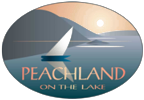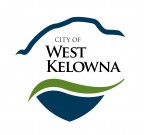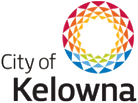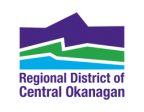Be prepared
2024 Emergency Preparedness Week
Watch our subject experts speak about post-wildfire hazards, FireSmart initiatives and ways to be prepared.
Emergency Management in BC is supported by a well practiced and highly regarded structure that involves your local communities developing Emergency Plans. During major incidents or emergencies, these local plans are supported by responders and staff at the local level, supported in turn by the Province through Emergency Management BC. In our region, these local programs are developed in a collaborative manner and a single plan for the Regional District of Central Okanagan ensures the highest level of support to residents. This plan has been used many times over the years in times of wildfire, flooding and other major incidents.
Three steps to emergency preparedness
However, even the best of plans by your local government can only do so much. It is up to you, the resident, to follow three steps to Emergency Preparedness at home or at work:
The Province of B.C.’s Emergency Management & Climate Readiness Blog recently announced an Interactive Emergency Ready Planner to make it easier to complete a home emergency plan.
There are many preparedness guides on Emergency Preparedness available. We recommend you start with either the Government of Canada Get Prepared or PreparedBC.ca. Both sites provide information on how you can be ready in the case of an emergency.
Wildland-Urban Interface Fires
Research has shown that a house with both a fire resistant roof and a FireSmart zone surrounding it is 85 percent more likely to survive a wildfire than one that is not so prepared.
Visit BC Wildfire Service for up to date information about wildfire prevention and active fire information/fire bans in the province.
For more information, check out the FireSmart Canada manuals and resources. The FireSmart Begins at Home manual provides individuals with recommendations to help reduce the risk of wildfire to homes and neighbourhoods.
Preparing for power outages
Extended power outage can impact the whole community and being prepared in advance will ensure the your health and safety. During an extended power outage, you may be without light, heat, air conditioning and hot water. Visit these resources below to help you prepare.
- Home Peparedness Checklist for Power Outage: PreparedBC
- Prepare for Power Outgages - BC Hydro
- Interior Health Emergency Preparedness
Additional resources
Although this site will be updated with any local information during a major emergency, there are a number of other agencies that provide useful information both for preparedness and about emergency situations. Find links to their websites below.
- BC Wildfire Service (active fire information/fire bans)
- DriveBC (road conditions including closures)
- Air Quality Health Index (smoke levels health risks)
- Fire Smart (also through BC Wildfire)
- River Forecast Centre (freshet/flooding/snow pillow information)
- FortisBC (power outages, gas emergencies)
- BC Hydro (power outages)
- Interior Health (Health/Drinking Water Advisories)
- Government of Canada Okanagan Lake levels
Preparedness is key in any emergency, including for a flood. Ensure you have a 72 hour disaster preparedness kit and an evacuation plan in place to be ready in the event of a flood. Visit the Get Prepared before a flood webpage for additional tips on what to do before, during and after a flood. Property owners in flood prone and low-lying areas are responsible for protecting their own properties from possible flood damage. Equipping yourself with a flood plan and the tools needed in case of a flood can help prepare you.
Frequently asked questions
While it sounds like it could be a brand of scented cleaner or facial tissue, freshet is the snow melt that typically occurs from April to July, in British Columbia. Freshet can become a problem when winter snow packs melt rapidly, overwhelming stream channels and creating floods.
- The difference is overland flow versus seepage.
- Water will overtop stream banks when flows are greater than the stream's capacity to convey the volume of water from rain events and spring snow melt.
- Groundwater damage will occur from seepage that occurs below the surface and finds its way through cracks and porous areas of a structure’s foundation.
- Groundwater can be unpredictable. If property owners have historically experienced wet basements or seepage, they should prepare accordingly. Suggestions include installing a sump pump inside, below floor, or outside the structure, below basement level, at the location of seeping and/or making sure foundation drains (if present) are working.
- Private property owners are responsible for protecting their structures from possible flood damage and anyone who has historically experienced flooding should prepare accordingly. Equipping yourself with a flood plan and the tools needed in case of a flood can help prepare you.
- Suggestions include making sure the ground is sloped away from your structures and water is directed away from your house by ditching or piping.
- Do not to pump water into the sanitary sewer system.
- Prepare a 72-hour kit for your family that includes food, water, a first-aid kit, identification and medications. For more information, visit the resources page.
- Know where the power and water shut-off is in your house.
- Place your important documents and identification on an upper floor in a sealed plastic bag.
- Have an evacuation plan, including for your pets or livestock.
- Review insurance available for your property – some coverage is available for overland flow (groundwater damage is typically not covered).
- Emergency Management BC expects property owners to obtain flood insurance, when and where available. Property owners who choose not to obtain flood insurance, where available, may not be eligible for Disaster Financial Assistance.
- Residents who live in low-lying waterfront areas, or were impacted by 2017 rising lake levels are encouraged to take similar precautions and use sandbags or other measures to protect their private property.
- Other small area lakes may fluctuate more and monitoring is an on-going process.
- Residents are encouraged to secure docks and boats. Residents undertaking repairs to docks and/or retaining walls damaged in last year’s flood are required to apply for a permit from the Province (FrontCounter BC; 1-877-855-3222; [email protected]).
- You can monitor Okanagan Lake Levels at wateroffice.ec.gc.ca. Okanagan Lake reaches full pool at 342.48; however, full pool does not indicate flooding. The Province has set a target of having the lake reach full pool in the spring to try and ensure adequate water supply through the summer.
- To report a flooding concern or potential problem (non-emergency) contact your local public works department.
- City of Kelowna: 250-469-8600
- City of West Kelowna: 778-797-1000
- District of Lake Country: 250-766-5650
- District of Peachland: 250-767-2108
- Westbank First Nations: 250-707-0493
- Regional District of the Central Okanagan: 250-763-4918
- To report an emergency, including threat of life, call 9-1-1.
- Visit the Get Prepared website for additional tips on what to do before, during and after a flood.
- Sign up for Central Okanagan Emergency e-updates to have the latest news delivered to your inbox. It’s the most direct way for staying informed if there is an emergency.
In the event that a homeowner needs to construct a sandbag dike or wall to protect their property, residents are encouraged to review the sandbagging tips and information provided by Emergency Management BC.
For sandbag pick-up locations, access the CORD Emergency map.
Landslides are one of the top 10 emergency hazards in British Columbia. Recognize the danger signs, including falling rocks or boulders, abnormally dirty water, a faint rumbling sound or unusual sounds such as trees cracking or boulders knocking together; Learn how to protect your home and property. If a landslide has occurred, stay away from the area as there may still be a danger of further slide activity or some flooding may occur in the aftermath.
- PreparedBC: Landslide information for homeowners and home buyers (landslide information)







